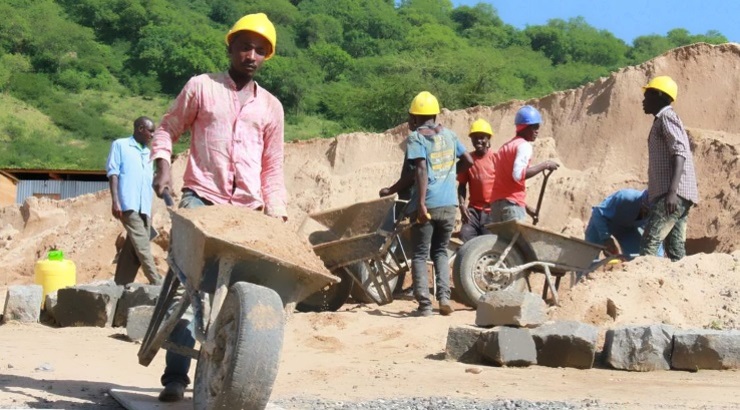Materials & Supplies
Hard Times for Builders as Sand Prices Hit All-Time High
Builders now have to cope with sand prices that have hit record highs.

Stricter regulations of sand harvesting in various counties have resulted in an unprecedented upsurge in the cost of the construction material leaving many small-scale property developers out of pocket.
Already struggling with high costs of labour, timber, steel and other inputs, builders now have to cope with sand prices that have hit record highs.
Kajiado, Makueni, Machakos, and Kitui, which have been supplying sand to Nairobi have recently prohibited the harvesting of the key building material in a bid to protect the environment from overzealous sand harvesters.
The bans have seen the cost of sand rising by at least 30 per cent, with 20 tonnes of the material selling for Sh40,000, up from Sh30,000 in February.
A 10-tonne pile of sand is now going for between Sh20,000 and Sh25,000 from about Sh15,000 a few weeks ago. This has forced some property developers to suspend their projects indefinitely, while others have turned to quarry dust – a by-product of the crushing process – which costs Sh10,000 per 20 tonnes.
“We were supposed to start the plastering of our houses a week ago but we cannot because of the scarcity of sand,” James Kyalo, a contractor told Xinhua in a recent interview.
Mr Kyalo said the current prices of sand had nearly doubled the plastering costs for the four-storey block of flat that he is contracted to build.
“The owner did the cost and decided to defer the work because even with the higher prices, one has to book and wait for some days before the sand is delivered,” he said.
Unlike Mr Kyalo, some builders do not have the patience to wait for the prices to improve. Joseph Mongare, who is building a residential house in Syokimau, says he has turned to quarry dust to cut costs.
“I bought 20 tonnes of sand at Sh38,000 and 60 tonnes of dust, which I’m mixing as I use. I thought of stopping the work to wait for sand but it did not make sense as that would have increased my costs in the long term,” he said.
This practice is, however, discouraged by construction experts who argue that it compromises the quality of buildings because quarry dust or its mixture is incapable of making stronger and more durable joints like pure sand.
RELATED: Paint Makers to Hike Prices as Input Costs Surge
Antony Kuyo, a consultant with Avent Properties in Nairobi says: “We are going to end up with many weak buildings or those whose quality is compromised because developers are building houses of up to seven floors using dust.”
Mr Kuyo opines that while counties are doing good to protect the environment, they should not take drastic measures that will disrupt other sectors of the economy.
Kajiado Governor Joseph Ole Lenku has, however, clarified that the prohibition of sand harvesting in the county is a temporary intervention as his government crafts policies to regulate the lucrative trade.
“We saw it wise to ban harvesting of sand in Kajiado so that the county comes up with policies of how the industry can be well-managed.
“[Sand] harvesters have degraded our rivers for many years, we would not allow this to continue as we lose revenue,” he said in a statement.














